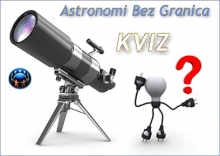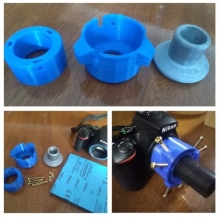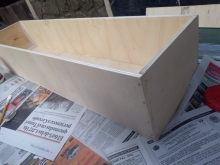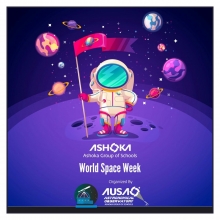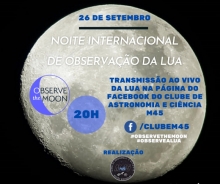Thijs Kouwenhoven
Occultations in the Solar system
Solar and lunar eclipses are spectacular events. Similar situations occur regularly when exoplanets move in front of their host star. Our own Moon blocks the light of many of stars at any time. The other planets are much further away and occult much fewer stars. Occultations of bright stars by the dwarf planet Pluto occur only every few years, because of Pluto’s small size and its large distance from the Earth. By carefully looking at the dimming of the starlight during such an event, it is possible to derive physical properties of Pluto and its atmosphere.
Pluto was discovered in 1930. Its orbit is eccentric, with a distance varying between 30 and 50 AU from the Sun, and an orbital period of almost 250 years. Pluto has never been visited by spacecraft, and many of its properties are still a mystery. Among the few methods available to learn more about Pluto are occultations. Pluto is now much closer than at the time when it was discovered. Pluto was at its closest distance in 1989 and therefore easier to study, leading to the discovery of its moon Charon, and of Pluto’s thin atmosphere. Pluto is now gradually moving further away, and we have to wait until the year 2237 until the next closest approach occurs.

Occultation events involving Pluto
When Pluto is predicted to occult a relatively bright star, observatories from all over the world are ready to record the phenomenon. An occultation recent event of great interest was the double transit on 23 June 2011, where both Pluto and Charon both occulted the star 2UCAC24677089. Astronomers obtained a stellar light curve of event from Hawaii. The light curve shows two strong dips in the luminosity. The first dip comes from Charon, which does not have an atmosphere. Charon moved in front of the star and blocked all starlight for ~45 seconds.

Pluto is responsible for the second dip, ten minutes later. As compared to the Charon’s dip, there are three differences: (i) Pluto blocks at most 65% of the starlight, (ii) the occultation lasts longer, and (iii) the dip does not have a rectangular shape, but is much smoother. Pluto moved at a slightly different path across the sky, and covered slightly more than 65% of the star’s surface. As Pluto is larger than Charon, the occultation took longer: ~80 seconds. Finally, the smooth shape of the curve provides clear evidence that Pluto has an atmosphere. At high altitudes the atmosphere blocks little starlight, while the denser atmosphere near the surface blocks more light. By studying the light curve it is possible to derive the atmospheric pressure at different altitudes above Pluto’s surface, without actually seeing it directly.

The combined occultation event on 23 June 2011 took about twelve minutes, and therefore required precise timing. The duration is determined by both the orbital velocity of Pluto (~17,000 km/hour), and the velocity of the observers on Earth, with orbit the Sun at ~110,000 km/hour. Not only time, but also location is crucial for observers: the occultation was only observable the North Pacific Ocean. Fortunately, Hawaii has plenty of telescopes that could be used to observe this rare event. The mobile SOFIA airborne observatory was also able to catch the event.
Climate change on Pluto
Pluto has been known to have an atmosphere for decades, so why detect the atmosphere again? The reason is climate change: Pluto’s orbit is eccentric, and the amount of sunlight received varies by almost a factor three. Pluto was at perihelion in 1989 and is now gradually getting colder, which affects its atmosphere. Pluto’s surface can become so cold that nitrogen gas freezes out on its surface, as it gets colder.
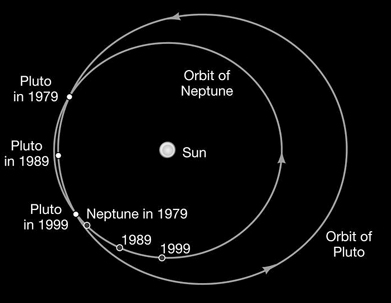
By comparing all available measurements from 1988 to 2013, astronomers discovered that the changes in Pluto’s atmosphere were smaller than previously thought. Surprisingly, the atmospheric pressure even seemed to increase, which was the opposite of what models predicted. The solution is quite tricky, and is related to Pluto’s obliquity: it orbits on its side. Pluto’s North :ole contains a large nitrogen ice cap. This North Pole was in permanent shadow during perihelion in 1989. Now that Pluto has moved away from perihelion, the North Pole is gradually exposed to sunlight, and the polar cap starts to evaporate. This increases atmospheric pressure, until Pluto moves too far away from the Sun, after which the nitrogen freezes out on the South pole. This cycle will repeat itself as Pluto continues to orbit around the Sun.

Future prospects
Although occultation events involving Pluto are rarely observable, they continue to provide relevant data, and are currently the only way to study Pluto’s atmosphere. This will change later this year when NASA’s New Horizons Spacecraft arrives at Pluto. The spacecraft does not have enough fuel left to slow down, so it only spends a few days near Pluto. Nevertheless, it will be the first spacecraft ever to visit the dwarf planet, and is bound to make many new discoveries!
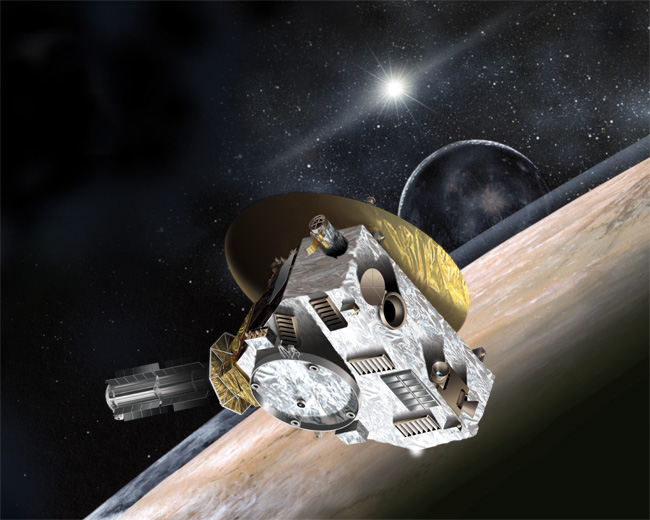
###
 Thijs Kouwenhoven is a research professor at the Kavli Institute for Astronomy and Astrophysics (KIAA) at Peking University in China. He grew up in the Netherlands, where he obtained his undergraduate degree at Leiden Observatory and his PhD degree at the University of Amsterdam, after which he spent several years as a researcher at the University of Sheffield (UK). His research interests include planetary systems dynamics, the formation and evolution of star clusters, and binary/multiple stellar systems.
Thijs Kouwenhoven is a research professor at the Kavli Institute for Astronomy and Astrophysics (KIAA) at Peking University in China. He grew up in the Netherlands, where he obtained his undergraduate degree at Leiden Observatory and his PhD degree at the University of Amsterdam, after which he spent several years as a researcher at the University of Sheffield (UK). His research interests include planetary systems dynamics, the formation and evolution of star clusters, and binary/multiple stellar systems.









